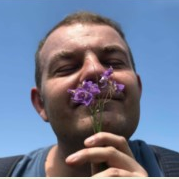Anatomical, Ontogenetic, and Embryological Studies of Plants
A special issue of Plants (ISSN 2223-7747). This special issue belongs to the section "Plant Development and Morphogenesis".
Deadline for manuscript submissions: 31 July 2024 | Viewed by 464

Special Issue Editors
Interests: anatomy
Special Issues, Collections and Topics in MDPI journals
Interests: plant biology; cell ultrastructure; pollination; carnivorous plants; plant anatomy; cell wall structure and function
Special Issues, Collections and Topics in MDPI journals
Special Issue Information
Dear Colleagues,
Angiosperms, an extraordinarily diverse and evolutionarily triumphant group of plants, are distinguished by their unique emblem—the flower. The flower, in the life cycle of angiosperms, is a magnificent organ where the sporophytic generation coexists and alternates with the gametophytic generation. Within the confines of the androecium and gynoecium, two distinct types of spores—microspores and megaspores—are generated, leading to the formation of male and female gametophytes, respectively. The processes of meiosis and double fertilization serve as the pivotal milestones in the life cycle of angiosperms. The concept of double fertilization in angiosperms, first discovered in Liliaceae by Nawaschin (1898, 1899) in Russia and by Guignard (1899) in France in the late 19th century, has since sparked a persistent endeavor to establish its universality and explore its diversity. This proposal for a Special Issue of Plants is dedicated to the ongoing exploration and comprehension of the intricate anatomy of flowers, the ontogeny of sexual whorls, and the nuances in embryology, all of which exhibit boundless diversity. The objective is to extend and enrich the journal’s contribution to the modern understanding of the reproductive biology of flowering plants. This includes delving deeper into the complex processes that govern plant reproduction, exploring the intricate interplay of various biological factors, and shedding light on the remarkable adaptability and diversity exhibited by flowering plants. By doing so, we aspire to foster a comprehensive and nuanced understanding of plant reproduction, thereby facilitating further research and innovation in this fascinating field of study.
Dr. Ana María Gonzalez
Prof. Dr. Bartosz Jan Płachno
Guest Editors
Manuscript Submission Information
Manuscripts should be submitted online at www.mdpi.com by registering and logging in to this website. Once you are registered, click here to go to the submission form. Manuscripts can be submitted until the deadline. All submissions that pass pre-check are peer-reviewed. Accepted papers will be published continuously in the journal (as soon as accepted) and will be listed together on the special issue website. Research articles, review articles as well as short communications are invited. For planned papers, a title and short abstract (about 100 words) can be sent to the Editorial Office for announcement on this website.
Submitted manuscripts should not have been published previously, nor be under consideration for publication elsewhere (except conference proceedings papers). All manuscripts are thoroughly refereed through a single-blind peer-review process. A guide for authors and other relevant information for submission of manuscripts is available on the Instructions for Authors page. Plants is an international peer-reviewed open access semimonthly journal published by MDPI.
Please visit the Instructions for Authors page before submitting a manuscript. The Article Processing Charge (APC) for publication in this open access journal is 2700 CHF (Swiss Francs). Submitted papers should be well formatted and use good English. Authors may use MDPI's English editing service prior to publication or during author revisions.
Keywords
- angiosperms
- double fertilization
- embryology
- flower anatomy
- megaspores
- microspores
- ontogeny
- plant reproduction
- reproductive biology
- sexual whorls







